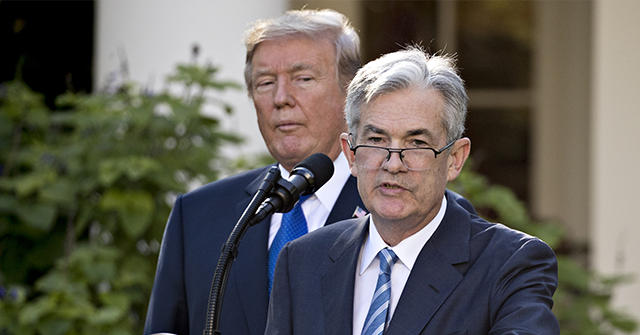The Deeper Economics Beneath Trump’s Monetary Policy
Donald Trump has a message for the Federal Reserve: “LOWER THE RATE!!!”
In a recent series of Truth Social posts, the president made the case that the strength of the U.S. economy justifies lower interest rates. He wrote:
“Tech Stocks, Industrial Stocks, & NASDAQ, HIT ALL-TIME, RECORD HIGHS! CRYPTO, ‘Through the Roof.’ NVIDIA IS UP 47% SINCE TRUMP TARIFFS. USA is taking in Hundreds of Billions of Dollars in Tariffs. COUNTRY IS NOW ‘BACK.’ A GREAT CREDIT! FED SHOULD RAPIDLY LOWER RATE TO REFLECT THIS STRENGTH.”
He followed that up with a more pointed take:
“‘Too Late’ DEMEANS THE GREAT CREDIT OF THE USA. We are now, again, the Number One Credit in the World! ‘Gigantic Comeback.’ The Fed Rate should be reflective of this. We should be at the top of the list!!! LOWER THE RATE!!!”
To many economists, this sounds backwards. Typically, strong growth, a hot stock market, and rising tariff revenue are taken as signs that the economy doesn’t need monetary stimulus. Stronger demand risks higher inflation, not lower.
Market strategist Jim Bianco summed up the orthodox view neatly in a post on X:
“Trump’s statement…suggests that the MAJOR factor driving rates is credit quality. Since he believes the US has the best credit quality (‘companies pouring in,’ ‘the hottest country’), he concludes that we should have the lowest interest rates.”
“This is how a real estate developer from Queens thinks about yields: the best properties should have the lowest yields. While true for private assets…this is not the case for developed-world sovereign yields. Credit quality is a VERY MINOR driver of their yields. Nominal growth, inflation expectations, and anticipated supply drive the level of sovereign yields.”
Bianco’s critique is both fair and persuasive—under standard macro theory, rising rates are what happen when the economy is strong. But Trump’s thinking may not be as off-base as it sounds. In fact, if we reframe his argument through the lens of two major ideas in modern macroeconomics—the global savings glut and productivity-driven disinflation—we find that Trump is touching on some real, well-established forces.
Strong Demand for U.S. Credit = Low Yields
Trump’s refrain that the U.S. is “the Number One Credit in the World” might sound like bragging—but it reflects a basic truth of global finance. Over the past two decades, foreign demand for U.S. Treasuries has surged, especially from emerging markets and reserve-rich nations like China, Japan, and the Gulf oil states.
Former Fed Chair Ben Bernanke called this the “global savings glut.” His argument was simple: foreigners are saving more than they invest, and the excess floods into the safest and most liquid market on earth—U.S. Treasury bonds. That extra demand pushes interest rates down, even when the U.S. economy is strong.
Later, economists like Ricardo Caballero and Emmanuel Farhi showed that it’s not just any saving—it’s a shortage of safe assets that matters. The U.S. remains the global supplier of trusted debt, and as long as other nations demand dollar-denominated stores of value, yields can stay low.
So, when Trump says “USA is taking in Hundreds of Billions of Dollars” and claims “the FED SHOULD RAPIDLY LOWER RATE TO REFLECT THIS STRENGTH,” it may sound like he’s confusing strength with creditworthiness, but there’s a deeper logic at play: robust foreign demand for Treasuries can absorb increased issuance without spiking rates, and that demand keeps inflation risk in check.
Productivity Growth Tames Inflation
Trump also points to Nvidia’s surge—“NVIDIA IS UP 47% SINCE TRUMP TARIFFS”—as evidence of confidence in the U.S. economy. More precisely, it reflects market optimism about a coming productivity boom driven by artificial intelligence.
Historically, productivity surges can allow for strong growth without triggering inflation, which is exactly what the Fed is worried about now. In the late 1990s, the U.S. economy grew at four percent a year, unemployment fell below four percent, and yet inflation stayed subdued. The reason? Supply-side improvements, especially from the spread of information technology, expanded potential output, allowing the Fed to hold rates relatively low.
If we’re on the cusp of a similar transformation due to AI, then Trump’s position—that a booming economy does not require higher rates—has historical precedent. It wasn’t orthodox at the time either, but it proved correct. Alan Greenspan’s Fed kept rates lower than many economists thought appropriate, and the result was non-inflationary growth.
If today’s stock market rally is a bet on the productive capacity of AI—not just short-term froth—then Trump’s logic holds: the Fed could cut rates without reigniting inflation, because future supply will catch up to demand.
Can the Fed Be Convinced?
Right now, the Fed sees the opposite. Officials remain convinced that tariffs are inflationary and that sustained demand poses overheating risks. As Bianco put it, “All of Trump’s ‘credit’ statements are arguments for high nominal growth and heightened inflation expectations.”
But if foreign capital continues to flow into U.S. assets and if productivity improvements are real, then the inflationary effect of demand may be muted or delayed. That’s why Trump’s instinct—however unorthodox—should not be dismissed out of hand.
He may not speak the language of Phillips Curves or r-star, but Trump is channeling two powerful economic ideas:
- The Dollar Is King: Foreigners want to save in dollars.
- The Supply Side Matters: Future growth might be supply-driven, not demand-fueled.
If both of those hold true, then lower rates are not just politically appealing—they’re macro-economically viable.
Read the full article here


